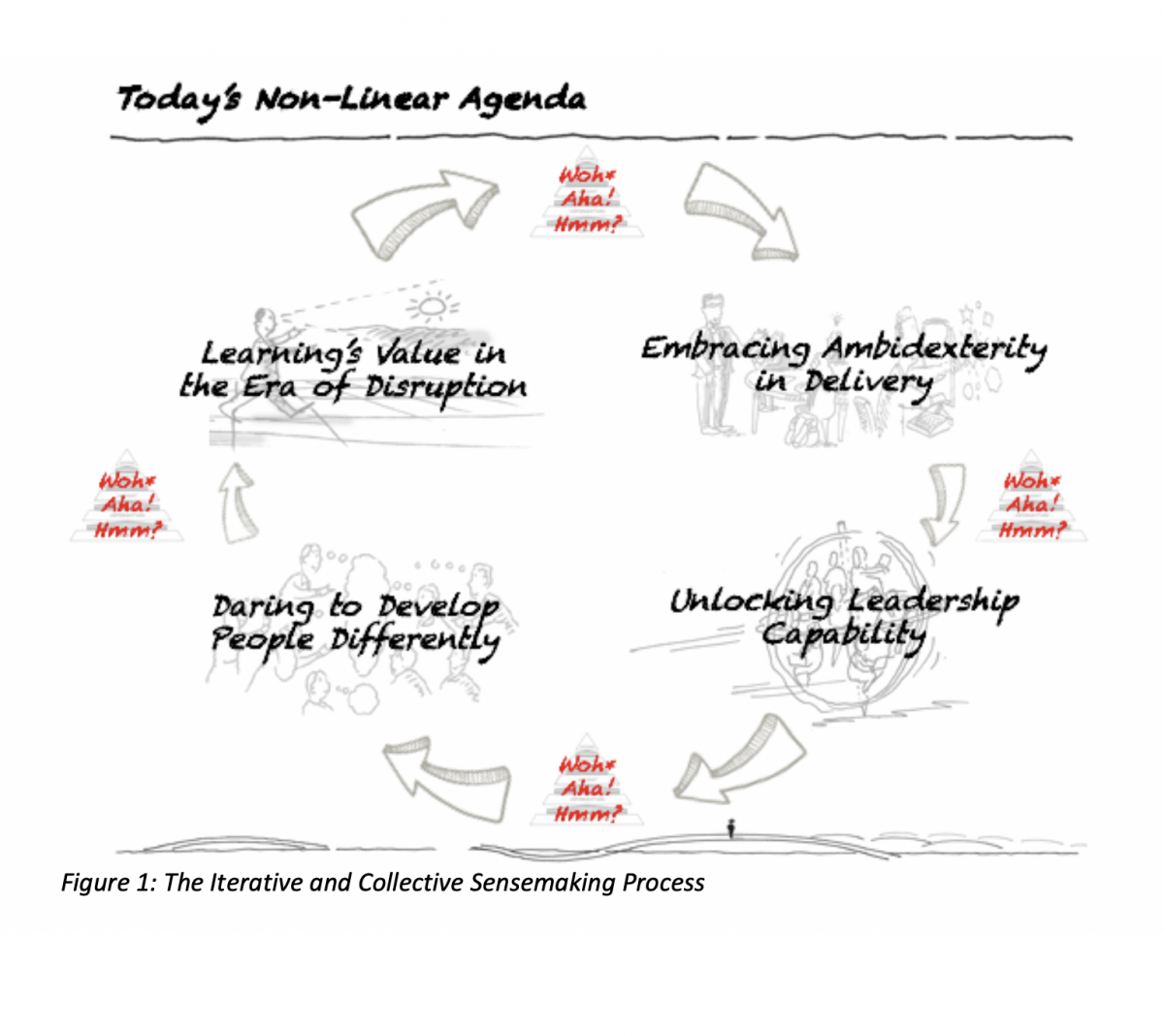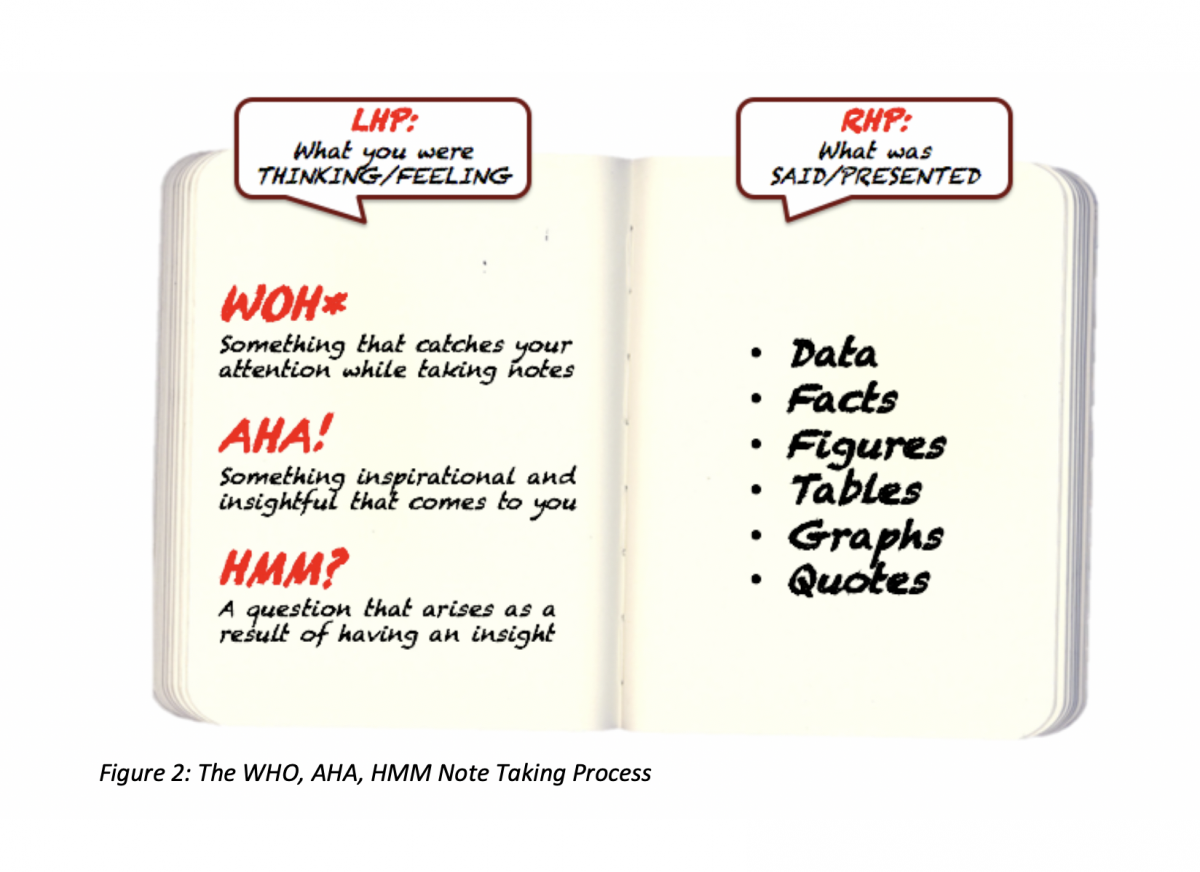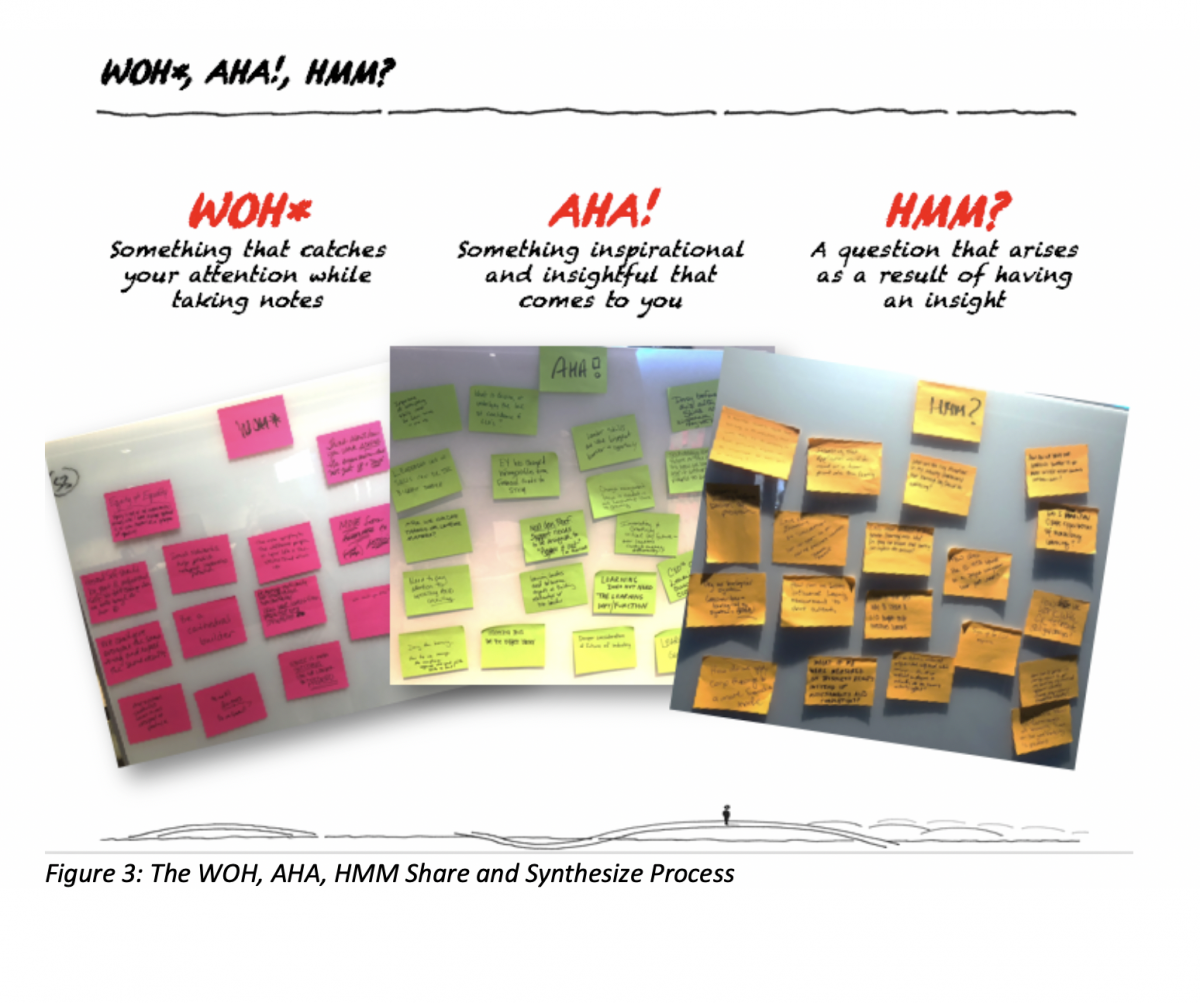Seeking to explore “the human side of leadership,” Training magazine convened its second annual Learning Leaders Summit at the GuideWell Innovation Center in Orlando, FL, on February 24.
More than 80 Learning leaders from around the world gathered for a day to tackle four vexing questions:
- How do we redefine learning’s value in the era of disruption?
- How can we embrace ambidexterity in learning delivery?
- How do we unlock latent leadership capability?
- How can we dare to develop people differently?
Given the depth of learning wisdom assembled at the summit, this session was designed as a circular and iterative collective sensemaking process as opposed to a linear and prescriptive series of individual presentations. (See graphic below)

To support this collective sensemaking process, we leveraged Chris Argyris’ concept of Double-Loop Learning. This learning approach enables groups of people to make sense of complex challenges where a change in mental models is required to achieve breakthrough insights.
The Learning leaders were encouraged to apply a specific notetaking approach that would enable them to share and synthesize their thinking in a facile and fluid manner. The summit’s design also borrowed from Peter Senge’s Left-Hand Column concept where notetakers capture what they are thinking and feeling, not just what is being said.
This WOH*, AHA!, HMM? approach encouraged Learning leaders to use the entire left-hand page (LHP) of their summit notebooks to capture what they were thinking and feeling on an ongoing basis as the day unfolded. (See graphic below.)

Throughout the day, Learning leaders shared and synthesized their WOHs, AHAs, and HMMs on a WAH Wall and engaged in a double-loop reflection activity to surface and synthesize the most salient patterns and themes that emerged from their individual LHP inputs. (See graphic below.)

To conclude the day, Learning leaders were afforded time to quietly engage with the WAH Wall and asked to capture the one key insight that surfaced for them. We then engaged in a process of developing a shared narrative by applying a mash-up of David Bohm and Jiddu Krishnamurti’s concept of Dialogue and contemporary techniques from the field of improvisation.
Learning leaders were challenged to create insight strings that logically linked their individual insights into a collective whole. What follows is the shared narrative developed in real time by the Learning leaders who attended the summit around each of the four questions.
We Need to Disrupt Ourselves
To initiate the summit, Brenda Sugrue and Mary Kay Vona of EY shared the results from their groundbreaking study, Learning’s Value in the Era of Disruption.
Much of the conversation centered around their key finding that senior executives in organizations are more positive than Chief Learning Officers (CLOs) about the value of learning in enabling strategic objectives and the extent to which there is a learning culture within their organizations.
In the age of disruption, business leaders have recognized that learning has an even more critical role to play in supporting business strategy and driving transformation. This creates a significant opportunity for CLOs to engage more closely with the business to identify critical roles for upskilling, agree on the metrics and investment, and build a learning culture into the DNA of the organization.
Key WAHs:
As Learning leaders, we have remained static in our thinking for far too long while the world has forged forward at breakneck speed. Senior leaders give learning a lot more credit than we think, perhaps even expecting more from Learning than we believe we can deliver.
Are we doing enough to disrupt ourselves? Will we continue to be order takers or can we become leader makers? Do we have the courage and confidence to self-disrupt and do what is right for the learner and for the business? Learners can generate their own learning without our intervention. Can we encourage our Learning organization to think and act differently to deliver different results? We must drive our learning content to be more in line with strategic company goals and focus on delivering business results rather than delivering training programs.
We Must Build Culture Physically and Digitally
In the second session, we heard from two leading organizations that took two very different approaches to addressing their need to cultivate an engaged workforce.
On the physical side of the culture equation, Cyndi Bruce of KPMG shared the process her organization went through to develop and build a new world-class Learning, Development, and Innovation Center in Lake Nona, FL. The leaders at KPMG recognized the value of building a world-class learning facility with leading-edge technology to enhance employee pride and morale, showcase the firm’s brand and infuse it with their culture and values, gain competitive advantage in recruiting talent and creating an environment conducive to innovation while achieving cost neutrality.
On the digital side of the culture equation, Laura Solomon and Theresa Cole of IBM shared how they leveraged technology to enable 40,000 global leaders from more than 170 countries and leading 350,000-plus employees to accelerate engagement. Neuroscience drove the design of the solution, which was simple, sticky, selective, science based, and mobile first. IBM’s digital engagement toolkit focused on 10 key topics known to drive employee engagement. Each topic was designed to provide specific guidance and actions for improving employee engagement. It empowered managers to conduct regular pulse surveys of their employees, and it leveraged Watson to identify optimal times for employees to engage in personalized microlearning around those engagement topics that mapped to their pulse survey responses.
Key WAHs:
KPMG has identified and invested in the critical connection between learning and culture. It is redefining what learning means. Learning is much bigger than training and is not confined to the traditional classroom model. KPMG has designed a space that facilitates ongoing learning inside and outside the classroom. In this facility, there is no front of the classroom. The facility is designed to function as a learning context, and traditional trainers have been replaced with learning facilitators.
IBM has successfully applied digital technology to strategically empower its managers to positively influence employee engagement. Learning can no longer sit on the sidelines of performance or engagement. It must be embedded in the flow of everyday work activity. Applying machine learning to empower managers to take engagement pulses and push personalized microlearning modules at the most opportune times during the workday is a powerful application of technology to drive individual learning and business outcomes.
We Can Unlock Leadership Capability
In the third session, we heard from two leading-edge practitioners who focus on unlocking latent leadership capability.
Steve Garcia of Contemporary Leadership Advisors shared how he applies a technique called Organization Network Analysis (ONA) to X-ray organizations to uncover the informal networks hiding in the shadows of the formal hierarchy. By applying this technique, Garcia has been able to identify leaders others in the organization would readily follow but who were not identified via the traditional succession planning process.
Antionette Carroll of Creative Reaction Lab shared how she has leveraged design thinking principles to design healthy and racially equitable communities and changed the way people address systemic oppression and inequities. The Equity Centered Community Design (ECCD) she developed has been successfully applied to redesign systems that limited certain groups from achieving their full potential.
Key WAHs:
Any system produces what it was designed to produce. We must acknowledge that many systems have oppression and inequity designed into them and that they need to be redesigned to unlock the latent human potential within them. We are all designers of our lives and our experiences. Are we doing enough to intentionally design our systems for equity?
We manage vertically, but we create value horizontally. Value comes from people, not from structure. We must understand how people work across the organization, not just up and down the hierarchy. Leadership is defined by relationships and connections, not aptitude and competency. Today, your informal network position is more important than your hierarchical position. Network analysis can help predict untapped leadership potential.
We Must Dare to Develop People Differently
In our final session, we heard from three Learning leaders who dared to develop people differently.
Mike Staver of Leading Real Estate Companies of the World shared how his team uncovered the most important factors for growing the business, identified those in the business who were successful in executing on those factors, and leveraged their learning and experience across the organization.
Rita Bailey of Up To Something shared how she developed a radical immersive learning journey designed to stretch leaders outside of their comfort zones to yield performance-boosting results on a shoestring budget.
Jenn Lea of the Human Performance Institute shared how focusing on energy, not time, can enable us to achieve sustained performance, and how Johnson & Johnson has achieved significant performance results by focusing on employee well-being.
Key WAHs:
If we want to deliver value to the business, we must get better at defining the performance problems and learning from the people in the organization who have already solved them. We must design for the person, not the organization.
We must not be afraid to “go big.” Leadership transformation requires us to create cognitive dissonance. We need to take people out of their comfort zones. Immersion can be done on a limited budget. Creativity compensates for cash. If you have a heart, a brain, and courage, you have all the resources you need.
Without your health, nothing else matters. We are doing so much more than training. We are developing people. Work is a part of life, and by devoting time to cultivate human wellness, both the person and the business benefit.
The Sensemaking Must Continue
One insight that perhaps best sums up the sentiment of those who attended this year’s Learning Leaders Summit is this:
“We are much further ahead than I realized. So many of the Learning leaders we heard from today are doing such meaningful and groundbreaking work in our new world of constant change and challenge. They are paving the way for the rest of us, and I am grateful and hopeful for our future.”
Be sure to join us back in Orlando next year as we continue this sensemaking dialogue!
Note: Thanks to all of the Learning leaders for engaging in the sensemaking process and providing valuable input and insights for this article.
Tony O’Driscoll is a professor at Duke University’s Fuqua School of Business and a research fellow at Duke Corporate Education. He studies how organizations build the leadership system capabilities required to survive and thrive in an increasingly complex world.


